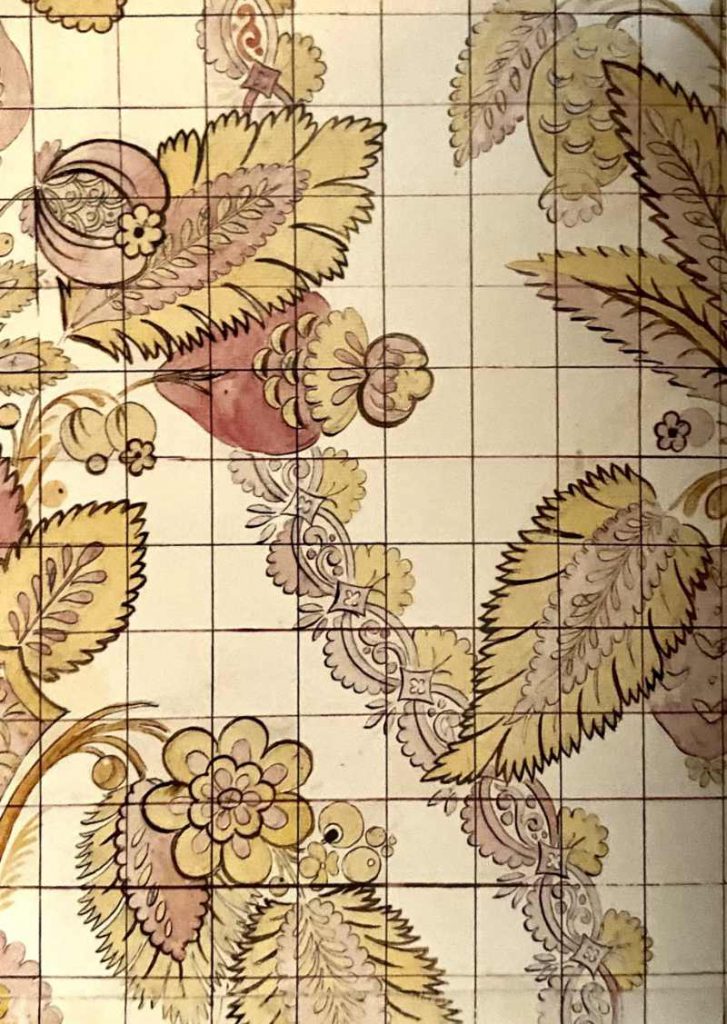The Silk Weavers of Spitalfields
Huguenot silk weavers brought new skills to England and settled in Canterbury, Norwich and Spitalfields in London.
English weavers resented the Huguenots at first, as they feared the loss of their business caused by the new arrivals. They challenged the qualifications and standard of work of the Huguenot weavers.
However, the Huguenots brought with them the new fashions from France and the skills with which to create sophisticated ball gowns and beautiful fabric details.

Weaving is very time-consuming and many people with different skills are involved in making a bolt of cloth to make up into a dress, waistcoat or jacket. The following are different jobs within the weaving trade:
Throwsters: twist silks into a thread or yarn. One of the most successful throwsters was the Courtauld family.
Dyers: the yarn had to be dyed before it was woven. One of the most successful dyers was Edward Peck who lived in Spitalfields and when he died in 1736, he left a huge sum of £40,000. Why was he so rich? He knew the secret of the crimson dye used for royalty and aristocracy.

Pattern designers: designs, patterned or flower’d, were designed especially for clients. Designers painted their designs on squared paper for the Huguenot weavers to weave. Some were simple and others, hugely complex, taking 4 months to weave one dress. One famous designer was James Leman of Leman Street in Spitalfields, many of whose designs are in the V&A collection.
Journeyman weavers: ‘Journeyman’ derives from the French method of payment by the day or ‘journee’ in French. These are the unsung heroes. They toiled at the loom 6 days-a-week and often for 12 hours-a-day and earned a paltry sum. When there was no work, there was no money and at times the poverty of the journeyman weaver was heart-breaking.
Master weavers: were wealthy, talented businessmen who attracted clients, employed the pattern designers and journeyman weavers to produce the garment required. They lived in fine houses in Fournier Street and grew exceedingly wealthy.
A tried and tested 1 hour lesson The Journeymen Weavers’ Story (Apprentices) can be downloaded here, which covers history (distinct topic after 1066), local history (if your school is in east London), literacy (defining difficult concepts and story-telling) and citizenship / British values. It also encourages soft skills such as empathy and reasoned argument through discussion and role-play. There is a KS2 lesson plan (probably best for years 5 & 6) and a powerpoint that can be adapted for both:
